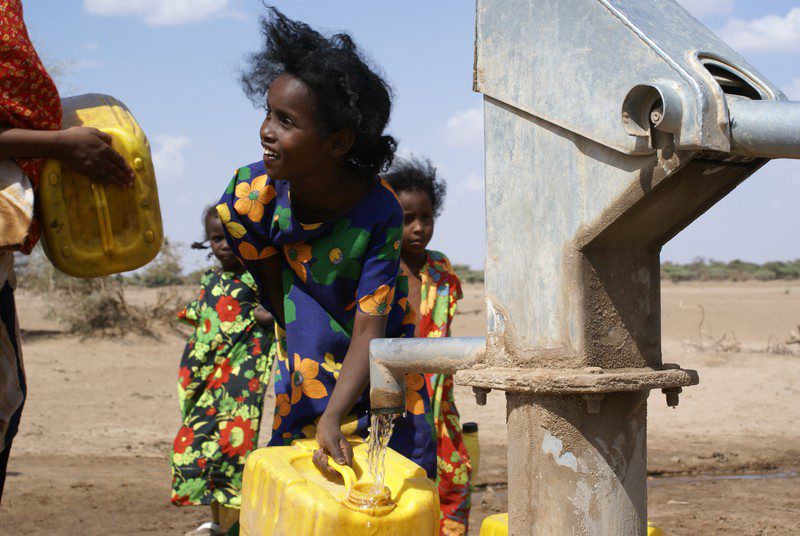Water for life
Oxfam is providing clean water, sanitation and hygiene education in some of the world’s poorest countries. In fact, it is one of the things we do best — our solutions are saving lives.
Running taps, working toilets, clean, safe drinking water and soap — in Australia, they’re things people can take for granted. Yet around the world, millions of poor people get sick or die each day because they must go without these necessities of life.
Almost 900 million people in the world do not have access to clean, safe drinking water, while 2.6 billion live without basic sanitation. Across the globe, more than 6,000 people die each day from diseases caused by dirty water — two-thirds are children. (World Health Organisation).
Oxfam’s water engineers and public health specialists are known internationally for the speed and efficiency with which they can help provide large-scale water supplies, essential sanitation facilities and hygiene improvements, even in the most difficult circumstances.
We integrate our water and sanitation solutions with hygiene in an evidence-based practice known as “WASH”. The World Health Organisation attributes about 90% of diarrhoeal diseases to poor access to WASH infrastructure.
Emergencies
When disaster strikes, Oxfam acts quickly to saves lives by delivering clean water and sanitation — from simple solutions like distributing buckets, jerry cans, soap and water purification tablets, to building and rehabilitating water supply systems, providing tanks, delivering clean water and constructing toilets.
This goes hand-in-hand with educating people about the importance of washing hands, collecting water in clean containers, storing water safely and purifying water for drinking and cooking.
“Clean water, sanitation and hygiene promotion are the most important elements in controlling the spread of infectious disease following a humanitarian disaster,” says Praphulla Shrestha, Oxfam Australia’s Water and Sanitation Technical Advisor.
“The first step always involves talking to the people in the camps about how poor hygiene practices can contaminate water supplies and make it unsafe to drink. Then we can start to test the water that people are drinking.”
Praphulla emphasises that the key to saving lives is to get trained water, sanitation and hygiene experts into the disaster area as quickly as possible. And we have these experts on standby around the world to provide fast, effective and innovative solutions.
Oxfam was one of the first aid agencies to use specialised water treatment units that purify vast amounts of water in a very short time — up to 6,000 litres an hour. Other agencies began using similar technologies following Oxfam’s example.
After Typhoon Kestana flooded large parts of Manila in the Philippines in September 2009, our solutions included building a new prototype “floating” toilet, to help ensure people staying in evacuation centres had adequate sanitation facilities.
When Cyclone Nargis devastated areas of Myanmar in 2008, Oxfam helped affected communities build rainwater catchments in just one day, using local materials.
One of Oxfam’s greatest water innovations is also one of its most simple — the Oxfam bucket, which we distribute to displaced people during emergencies. Winner of a Millennium Design Award, the bucket is designed to be light, durable, and keep water clean and safe. It stacks, is easy to transport, has a tight-fitting lid to keep out the dirt and prevent spillage, and an insertable tap to prevent collected water from being recontaminated. The plastic is UV resistant to prevent algal build-up.
Vasantha Nilaweera was one of thousands of displaced people living in temporary camps in Sri Lanka after the 2004 tusnami who experienced Oxfam’s comprehensive water response.
“Oxfam gave training to everyone in safety and hygiene,” Vasantha recalls. “They gave us water filters and we took water from two separate tanks — one for drinking and one for washing. People from Oxfam also came to check the quality of the water.”
Long-term solutions
In the context of our long-term development work, Oxfam provides water, sanitation and hygiene solutions that are tailored to local needs, conditions and technologies.
We drill boreholes, sink wells, install tanks, pumps and tap stands, construct entire gravity-fed water supply systems and small-scale irrigation schemes, build toilets, set up household water treatment solutions, promote the production and use of soap and promote safe hygiene practices in homes and schools.
